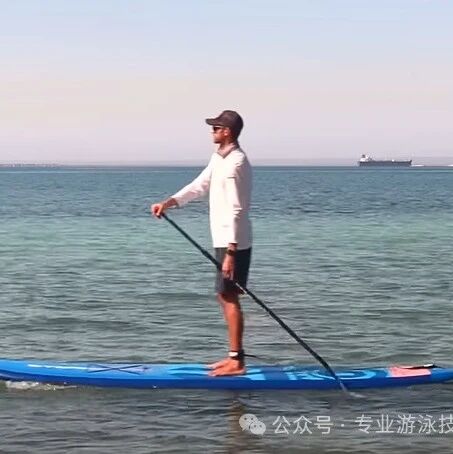Improve your body rotation to activate the freestyle swimming mode.
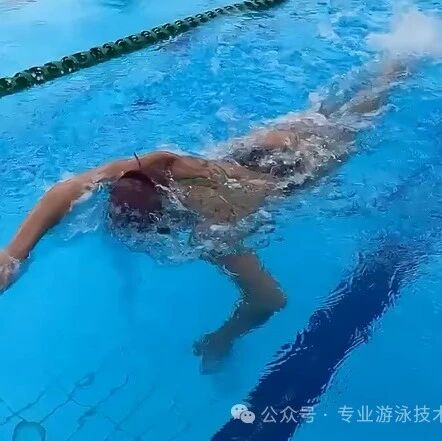
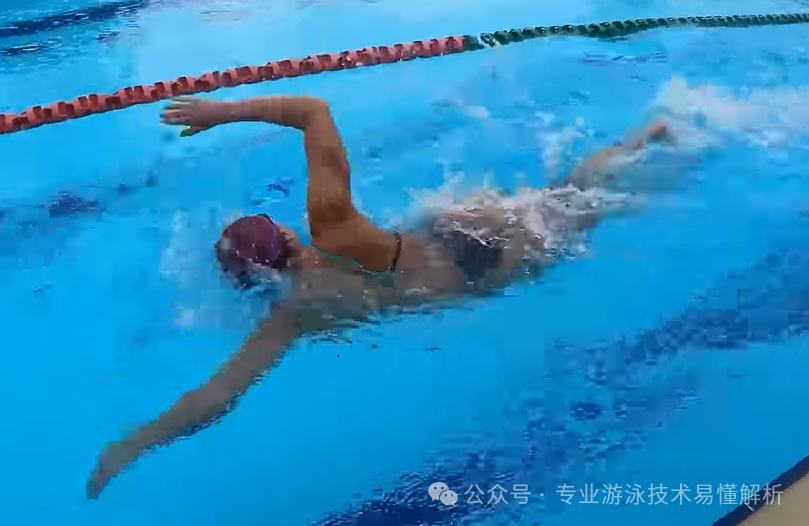
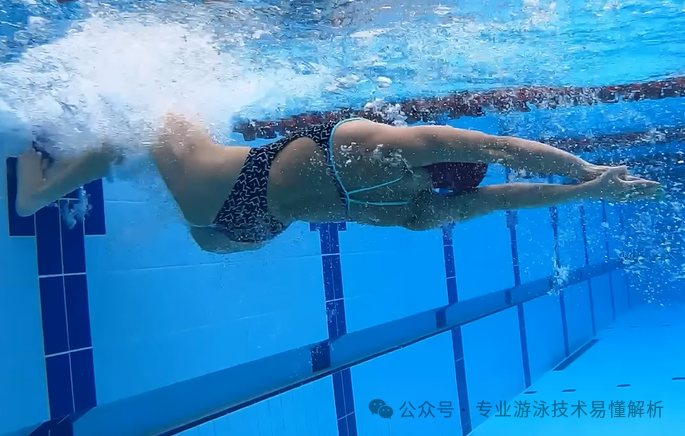
1. Swimming speed is limited by the strength of propulsion and depends on the ability to activate muscle groups.
The magnitude of the propulsion force is directly determined by the number of muscle groups involved in the pushing motion. Beginners typically rely only on their palms, forearms, upper arms, latissimus dorsi, and core muscles. Intermediate swimmers can engage their upper arms and latissimus dorsi, while more advanced swimmers may incorporate their core muscles into the movement as well.
Imagine the motion of throwing a javelin—without much power from your upper arm and latissimus dorsi, you wouldn’t be able to throw it very far. But add a twist of your torso, engaging your core muscles, and suddenly the javelin soars much farther. Similarly, when swimming freestyle and pushing off the water, once you tap into that core-engaged sensation, the effort feels noticeably lighter—and much easier. While this technique isn’t strictly essential for short-distance swimming, it becomes absolutely critical for longer distances or when swimming extended periods in open-water environments. By the end of a long swim, your arm strength is typically exhausted, making it crucial to rely on the rotational force generated by your body’s side-to-side movements to maintain efficient propulsion through each stroke.
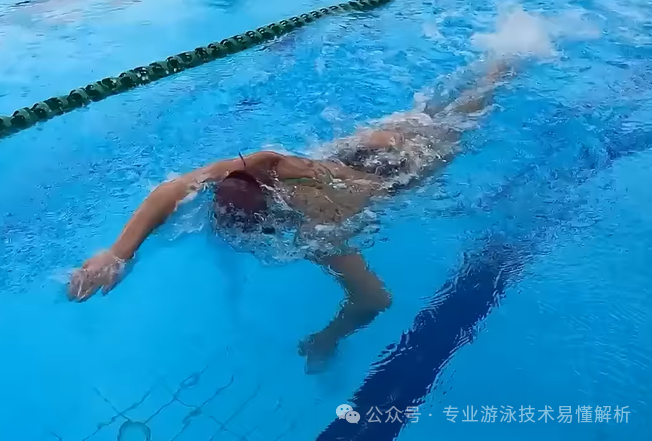
2. The key to swimming speed lies in maintaining consistent, continuous power—think of turning your body sideways as shifting gears to adjust your pace.
For example: After the frog kick and glide, the body surges forward. But after floating for a moment, the speed begins to slow down. To maintain momentum, you need to initiate the next frog kick and glide before the speed drops. If you can sustain this rhythmic pattern, your swimming speed will already reach the theoretically ideal pace. To push beyond that point and further increase your speed, you’ll have to refine the fundamental techniques—such as perfecting your frog kick, leg movements, and hip stabilization.
For example: In freestyle, after one arm completes the pull-through phase and enters the recovery phase, the other arm remains fully extended forward. If the stroke is executed efficiently, the body naturally glides forward due to inertia. To maintain this momentum, it’s crucial to initiate the next arm pull before the current glide phase ends—ensuring that at all times, at least one arm is actively pushing through the water. This consistent rhythm allows freestyle swimming to reach its theoretically optimal speed. Of course, during a short-distance freestyle sprint, swimmers often prioritize maximizing stroke frequency over considering the benefits of inertial gliding, since the brief recovery period provided by inertia during normal swimming is negligible in such high-intensity efforts. Instead, they focus solely on increasing the number of strokes per second. However, the real challenge lies in precisely timing two powerful "heavy legs"—which occur roughly every six strokes—with the ideal moments when each arm performs its forward push, one on the left and one on the right. Mastering this coordination is the key to achieving peak sprint speed.
From the perspective of swimming technique, both arm and leg movements should be coordinated with the body's lateral rotation as a reference. By focusing on the timing of the body's side-to-side motion, swimmers can better feel when to initiate the push phase with their arms—and subsequently, when to execute the kicking motion. As a result, the arm-push action and leg-kick will naturally synchronize. Specifically, the arm push begins and ends in perfect unison with the body's lateral rotation, while the leg kick is timed to coincide with the moment when core strength is engaged. Interestingly, the leg kick actually starts slightly earlier than the body's side-to-side movement, since just before the rotation begins, the core muscles subtly contract. This initial engagement of the core, combined with the subsequent leg kick, helps propel and accelerate the body’s lateral rotation.
Note that gently engaging your core isn’t about deliberately sucking in your stomach—it’s simply the same sensation as standing at attention: lifting your head, straightening your chest, and gently tightening your abdomen. There’s no need to consciously pull your stomach in; just focus on maintaining that firm, toned feeling.
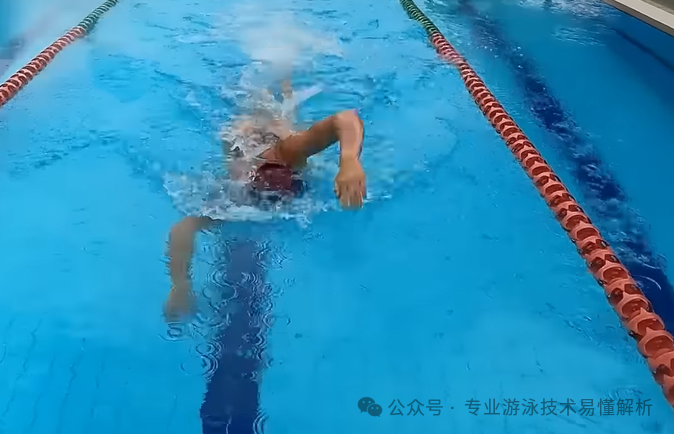
One WeChat official account shares swimming tips, while another focuses on software insights, online resources, and reading experiences.
Thank you for your supportive and encouraging likes, as well as the comments that spark meaningful conversations—and even more, we’d love for you to share and forward this content!
Related Articles
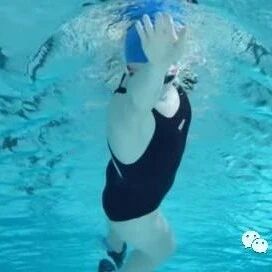
How to find the sideways support? A detailed analysis of the body rotation movement in the full-submerged freestyle stroke
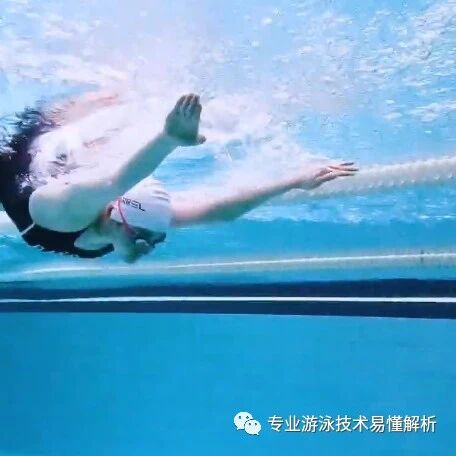
Korean beauty swim coach demonstrates common mistakes in beginner butterfly stroke techniques.
